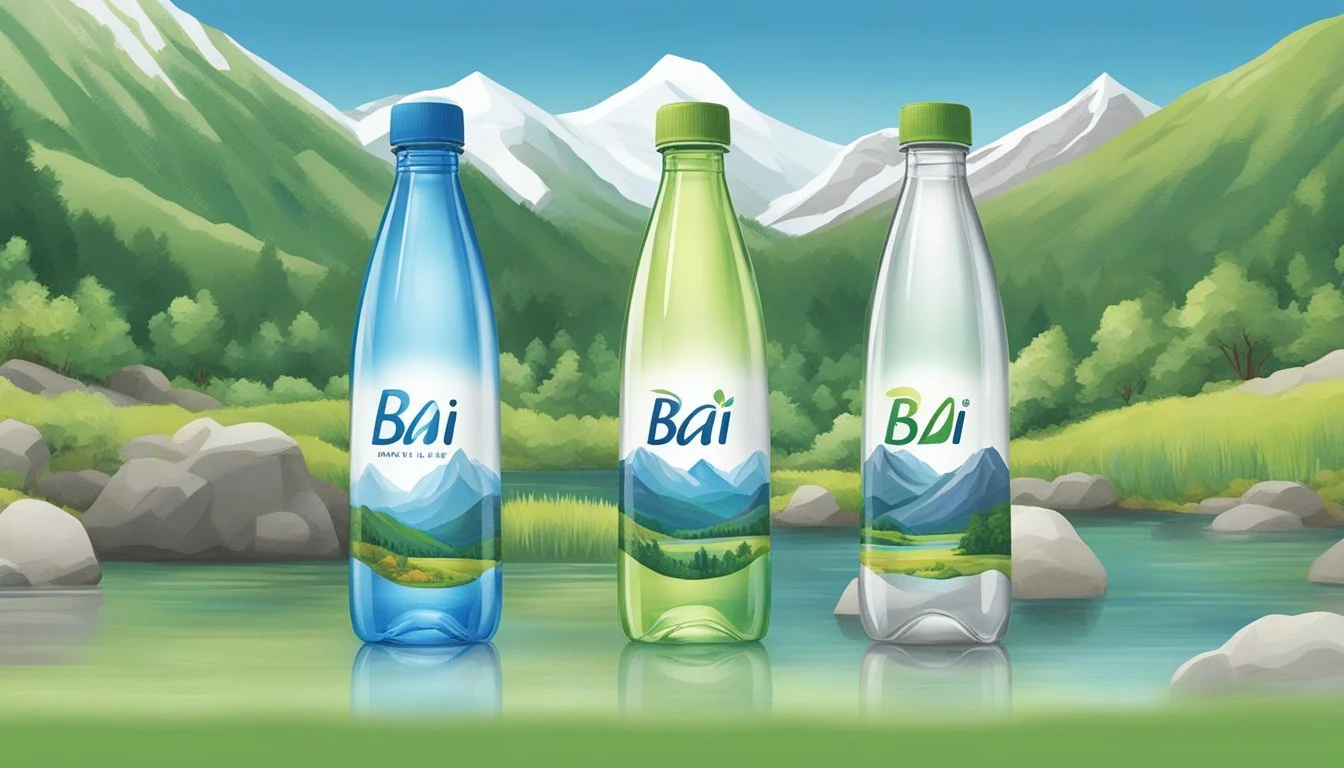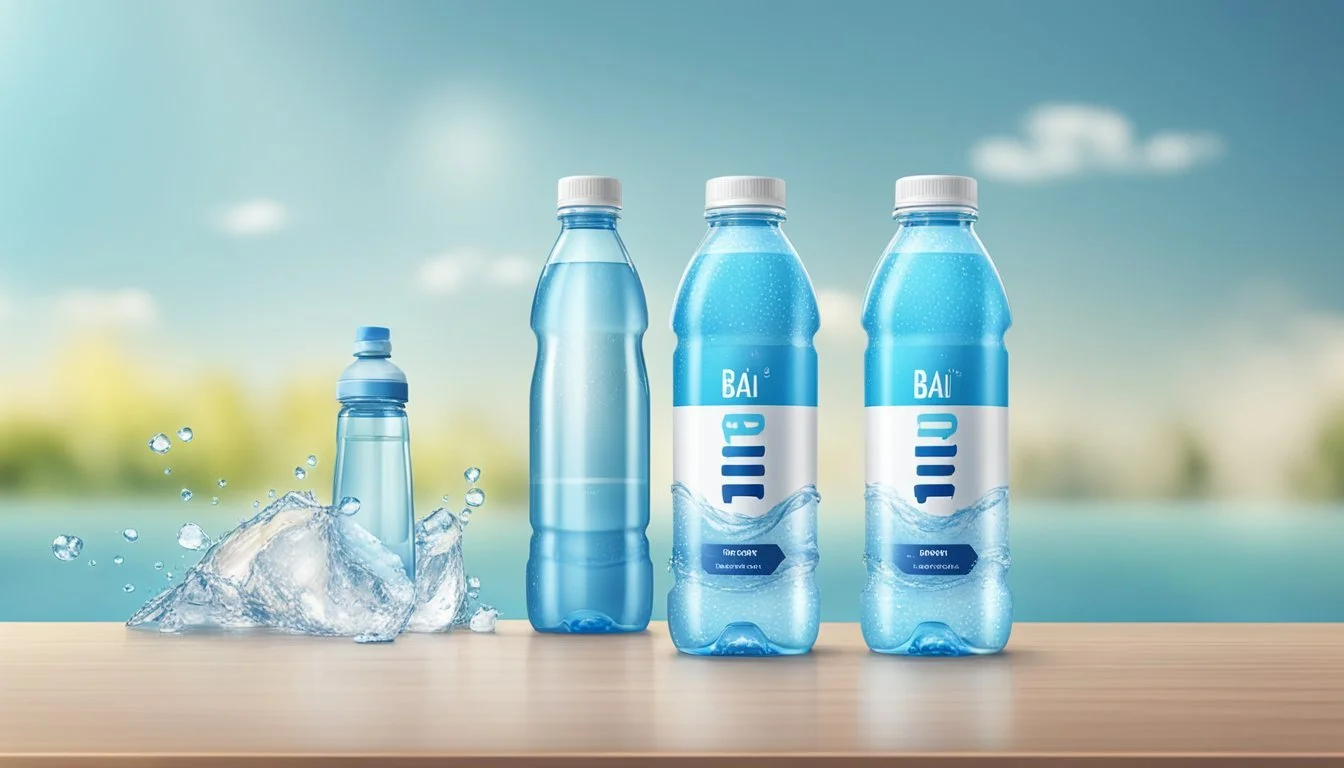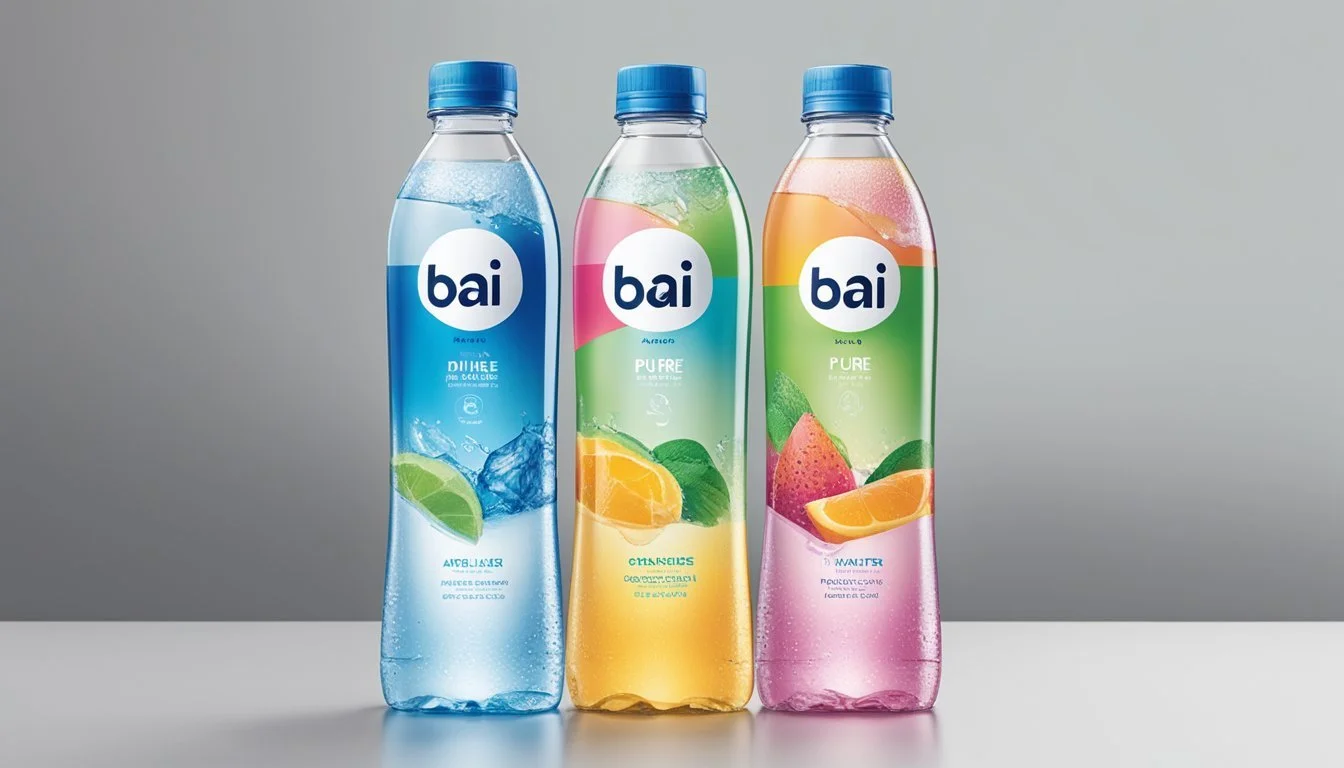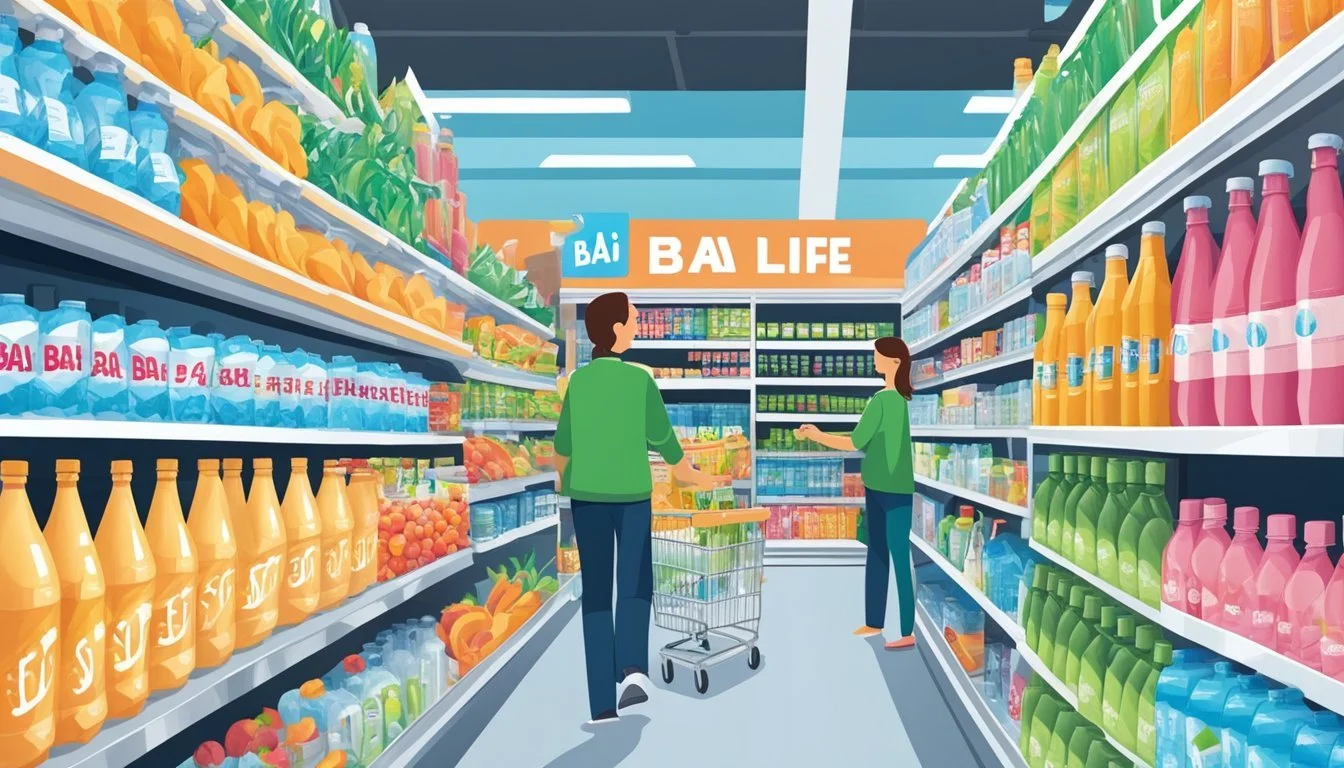Bai vs. Pure Life
Bottled Water Showdown
Choosing the best bottled water can be a daunting task with the array of options available. Two prominent brands in the market are Bai and Nestlé Pure Life. Bai offers a range of antioxidant-infused beverages that provide both hydration and flavor, appealing to those who seek a bit more from their water. Nestlé Pure Life, on the other hand, is a conventional bottled water that's widely distributed and known for its reliable bottled water, ensuring consistent quality and mineral content.
For consumers seeking a straightforward hydration solution, Nestlé Pure Life delivers a dependable and widely available option. This brand undergoes a multi-step filtration process, ensuring stable levels of essential minerals like calcium and magnesium. Conversely, Bai’s infused beverages might attract those who are looking for added health benefits and unique flavors, making it a more versatile option for hydration enthusiasts.
Understanding the differences between Bai and Nestlé Pure Life can guide customers to make a choice that better suits their lifestyle and preferences. Both brands have their distinct advantages, whether it’s the straightforward purity of Nestlé Pure Life or the flavorful, antioxidant-rich profile of Bai.
Background on Bai and Pure Life
Bai and Pure Life offer distinct options for bottled water consumers. Bai is known for its antioxidant-infused beverages, while Pure Life focuses on providing widely accessible bottled water.
Company Histories and Mission Statements
Bai was founded in 2009 by entrepreneur Ben Weiss. The company aims to deliver flavorful, low-calorie beverages enhanced with antioxidants. Bai quickly gained popularity by combining functional benefits with great taste. Its mission focuses on healthy hydration and innovation in the beverage industry.
Pure Life is a brand under Nestlé Waters, established to offer pure, clean drinking water to a broad audience. Nestlé Waters has a history spanning over a century, with a mission to provide safe and affordable water. Pure Life prioritizes accessibility and quality, aiming to cater to the everyday hydration needs of consumers.
Product Range and Brand Positioning
Bai offers a variety of infused beverages beyond just water. Their products include antioxidant-infused water with selenium, alkaline water with a pH of 7.5, and flavored drinks like Bai Antioxidant Water. These offerings are positioned as premium options focused on health and wellness benefits.
Pure Life provides a more traditional bottled water experience. It is one of Nestlé's many water brands, known for its reliable quality and widespread availability. Pure Life is marketed as an affordable, everyday hydration solution, making it accessible to a wide range of consumers. Nestlé's extensive distribution network ensures that Pure Life can be found easily in various markets.
Water Quality and Purity
Both Bai and Pure Life offer bottled water options that claim to prioritize quality and safety. This section will compare their sources, filtration processes, mineral content, and testing protocols.
Source and Filtration Process
Bai Water sources its water from carefully selected springs. The water undergoes a multi-step filtration process to ensure purity. Steps include microfiltration and reverse osmosis, which helps remove impurities and improve taste.
Pure Life by Nestlé sources its water from a combination of well-identified springs and municipal supplies. Nestlé employs a thorough filtration process that includes microfiltration, activated carbon treatment, and reverse osmosis. This multi-barrier approach ensures consistent quality and purity.
Presence of Minerals and Electrolytes
Bai Water includes added electrolytes such as potassium and magnesium. These electrolytes enhance hydration efficiency, making Bai a preferred choice for those seeking additional health benefits.
Pure Life focuses on delivering a clean and neutral-tasting water without added minerals or electrolytes. The lack of added substances makes it a more straightforward choice for those desiring a basic hydration option.
Testing for Contaminants
To comply with federal standards, both Bai Water and Pure Life conduct rigorous testing for contaminants. This includes testing for potential contaminants such as lead, heavy metals, and other harmful substances.
Bai Water ensures its product is free from pollutants through extensive testing protocols that align with FDA standards.
Pure Life also adheres to strict quality standards set by both the FDA and Nestlé's internal quality assurance programs. Regular testing is conducted to maintain safety and purity levels, ensuring the water meets or exceeds EPA standards for drinking water quality.
Health and Hydration
When choosing between Bai and Nestlé Pure Life, it's important to consider their effects on hydration and health. Their electrolyte content, pH levels, and mineral content all play crucial roles in determining their benefits.
Hydration Benefits
Both Bai and Nestlé Pure Life effectively aid in hydration. Proper hydration is essential for maintaining overall health, supporting bodily functions, and enhancing physical performance.
Bai Water's added electrolytes may offer a slight edge, improving the body's ability to retain fluids. It contains natural antioxidants, primarily from coffee fruit extract, which can also contribute to general well-being.
Nestlé Pure Life focuses on providing clean, pure water. While it lacks added electrolytes and antioxidants, it meets basic hydration needs efficiently.
Electrolyte Content and Its Role
Electrolytes play a significant role in maintaining fluid balance and muscle function.
Bai Water includes electrolytes like potassium and magnesium, which support hydration and muscle health. These added minerals can help replenish what the body loses through sweat, making Bai a potentially better option for active individuals.
Nestlé Pure Life, without additional electrolytes, relies solely on its pure water content. While it hydrates efficiently, it may not be as beneficial for those needing to replenish lost minerals quickly.
Impact of pH Levels on Health
The pH level of water can affect its taste and how it interacts with the body's chemistry.
Bai Water has a slightly alkaline pH, which some believe supports better overall hydration and can help neutralize acidity in the body. This can be particularly beneficial for individuals with certain dietary habits.
Nestlé Pure Life generally has a neutral pH, around 7. It provides balanced hydration without altering the body's natural pH levels. Its neutrality makes it a consistent and reliable choice for regular consumption.
In summary, both Bai and Nestlé Pure Life offer unique benefits. Bai's additional nutrients and slightly alkaline pH can provide extra health benefits for some users, while Nestlé Pure Life delivers pure, straightforward hydration.
Taste and Ingredients
Both Bai and Pure Life offer unique taste experiences and ingredient profiles. Bai stands out with its infused natural flavors and added benefits such as antioxidants, while Pure Life focuses on pure hydration without additional flavoring.
Flavor Profile Comparison
Bai Water features a distinctive flavor profile, enhanced by the addition of natural flavors and coffee fruit extract. This results in a slightly sweet taste with a hint of fruity undertones. Each bottle contains 1 gram of sugar and 10 calories, making it a low-calorie option with an enjoyable taste.
Pure Life, on the other hand, is free from any additional flavors, providing a crisp and clean taste. It appeals to those who prefer a straightforward, unflavored hydration option. The absence of sweeteners and flavorings makes it a classic choice for pure water enjoyment.
Additives and Flavor Enhancers
Bai Water incorporates several additives aimed at enhancing both taste and nutritional value. These include antioxidants from coffee fruit extract and Vitamin C. These additions not only improve the flavor but also offer potential health benefits.
Pure Life opts for simplicity, with no added ingredients or flavor enhancers. This makes it a pure and unadulterated choice for those who prefer minimalism in their beverages. It contains electrolytes, but they are naturally occurring from the source water, rather than being added for taste.
Bai's use of coffee fruit extract and natural flavors provides a unique advantage in both taste and nutritional profile. Pure Life's strength lies in its pure, natural water, catering to those who value straightforward, clean hydration.
Product Variants and Innovations
Bai Water and Nestlé Pure Life exhibit distinct approaches in their product offerings. Bai Water focuses on unique infusions and added health benefits, while Nestlé Pure Life emphasizes purified hydration with specialized variants.
Infused and Flavored Options
Bai Water excels in the market with its antioxidant-infused and flavored water options. These beverages are flavored with various fruits and provide a refreshing twist beyond traditional water. Bai’s drinks often contain vitamin C and sometimes caffeine, delivering a dual boost of hydration and energy.
Nestlé Pure Life offers limited flavored options compared to Bai. They focus more on ensuring a consistent taste through their multi-step purification process, aiming for a clean and neutral flavor profile.
Specialty Waters and Their Unique Ingredients
Bai Water innovates with beverages that are not just for hydration but also function as wellness drinks. Their products include antioxidants sourced from coffeefruit extract and Vitamin C, appealing to health-conscious consumers. Additionally, some Bai drinks contain small amounts of caffeine, offering a light energy boost.
Nestlé Pure Life caters to specific needs with specialized products like Nestlé Pure Life Exotics and Nestlé Pure Life Plus. The Exotics line features sparkling water with a hint of fruit flavor, while the Pure Life Plus incorporates added benefits such as electrolytes for enhanced hydration, targeting active individuals.
Packaging and Sustainability
Examining the packaging and sustainability of Bai and Pure Life bottled waters involves considering the materials used in their bottles and their environmental impact.
Bottle Materials and Design
Bai uses PET bottles for its beverages, known for being lightweight and recyclable. These bottles are designed to be durable and maintain the integrity of the beverage they contain.
Pure Life, on the other hand, also packages its water in PET bottles. These bottles are BPA-free, ensuring the safety of the consumers. Pure Life often emphasizes the clarity and simplicity of its bottle design, making it user-friendly and easy to recycle.
Environmental Impact and Recycling Initiatives
The environmental impact of bottled water is a significant concern for both brands. Bai makes efforts to ensure that its PET bottles are recyclable, encouraging consumers to participate in recycling programs. Their focus on using recyclable materials helps reduce waste and promote environmental sustainability.
Pure Life highlights its initiatives to improve sustainability by using recycled materials in its packaging. They also stress the importance of water conservation in their sourcing practices. Pure Life is part of a broader commitment by Nestlé to enhance sustainability across its brands.
Focusing on the use of recycled materials and promoting recycling, both Bai and Pure Life illustrate their commitment to reducing environmental impact and enhancing sustainability.
Consumer Experience and Accessibility
Bai and Nestlé Pure Life offer differing experiences for consumers based on their flavor profiles, marketing strategies, and distribution networks. Additionally, they vary significantly in pricing and perceived value for money, affecting how consumers view these brands.
Availability and Distribution
Bai and Nestlé Pure Life are both widely distributed, but there are some differences. Nestlé Pure Life, being a staple in the bottled water industry, is found in numerous retail locations, including grocery stores, convenience stores, and online markets. Its extensive distribution network ensures it is almost always available to consumers.
Bai, while also widely available, might not be as omnipresent as Nestlé Pure Life. Bai’s unique selling points, such as antioxidant infusions and flavored waters, mean it is often found in specialized health and wellness sections. Bai is also heavily marketed online, which can influence its accessibility depending on the consumer’s preferred shopping method.
Pricing and Value for Money
Pricing is another key factor that differentiates Bai and Nestlé Pure Life. Nestlé Pure Life is typically positioned as an affordable option in the purified water segment. Its price point is designed to be competitive, appealing to budget-conscious consumers looking for basic hydration needs without added benefits.
Bai, on the other hand, tends to be priced higher due to its added benefits like antioxidants and flavor options. The higher cost reflects the brand’s positioning as a premium option in the bottled water market. For consumers who prioritize health benefits and diverse flavors, Bai’s higher price might represent better value for money.
When compared, Nestlé Pure Life offers excellent value for those seeking basic, economical hydration. Bai caters to those willing to spend more for additional health benefits and flavor enhancements.
Feature Bai Nestlé Pure Life Distribution Specialized, health-focused Extensive, general retail Price Range Higher due to added benefits Budget-friendly Value Proposition Premium due to antioxidants Economical hydration
Regulations and Safety Standards
Bai and Nestlé Pure Life both adhere to stringent regulations and safety standards to ensure the quality and safety of their bottled water. The following points delve into specific compliance measures and safety guidelines.
Compliance with Health and Safety Guidelines
Both Bai and Pure Life must follow the U.S. Food and Drug Administration (FDA) standards, which govern bottled water safety. These standards are akin to those set by the Environmental Protection Agency (EPA) for tap water. The FDA enforces regulations that ensure bottled water is free from contaminants, including heavy metals like lead and arsenic, and synthetic chemicals like PFAS.
Nestlé Pure Life uses a multi-step filtration process, which includes reverse osmosis, to purify its water. Bai, which offers flavored water, includes additional ingredients like erythritol and stevia. These ingredients are regulated to ensure they do not compromise safety.
Both brands undergo rigorous testing. Bottled water must consistently meet or exceed safety standards to remain compliant and safe for consumers.
Wellness and Lifestyle Considerations
Bai and Pure Life cater to different aspects of wellness and lifestyle. Bai emphasizes added benefits like antioxidants and low-calorie content, which appeal to health-conscious individuals, while Pure Life focuses on straightforward hydration.
Targeting the Health-Conscious Consumer
Bai Water is formulated with health-conscious consumers in mind. It includes antioxidants from ingredients like coffee fruit extract and tea extract, which can support overall health by fighting oxidative stress.
Moreover, Bai Water is low-calorie, with only 10 calories per bottle, making it an excellent choice for those monitoring their caloric intake.
Bai is also gluten-free and vegan, suitable for those with specific dietary restrictions. The presence of electrolytes in Bai Water aids in more efficient hydration, making it a practical option for active lifestyles.
In contrast, Pure Life offers a more traditional approach. It focuses on providing clean, reliable hydration without additional frills. While it does not contain added vitamins or antioxidants, it is a straightforward, accessible option for everyday hydration needs.
Conclusion
When comparing Bai and Nestlé Pure Life, several factors should be considered.
Hydration Efficiency
Bai Water includes added electrolytes, which may slightly enhance hydration efficiency over Nestlé Pure Life's basic formula.
Nutrient Content
Bai: Includes electrolytes and antioxidants.
Nestlé Pure Life: Basic hydration-focused formula.
Health Considerations
Both brands offer hydration benefits, but Bai's added nutrients might appeal to health-conscious individuals.
Taste and Consumer Preference
Some consumers may prefer Bai's flavor options, while others might favor the simplicity of Pure Life.
Environmental Impact
Packaging and sustainability practices can also influence the decision between the two brands.
Comparing Bai and Nestlé Pure Life involves evaluating individual needs for hydration, nutrient content, and taste preferences. Both brands serve their purpose but cater to different aspects of consumer demand.








